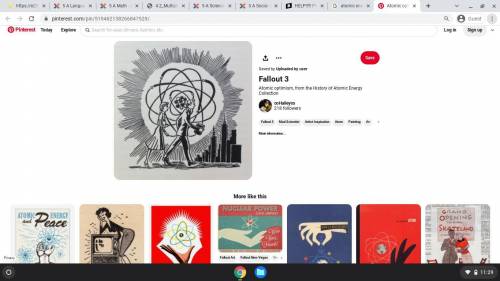HELP
Physical Models Activity
You have explored some interesting, informative, and amu...

Chemistry, 20.10.2021 07:40 restinpeicejahseh
HELP
Physical Models Activity
You have explored some interesting, informative, and amusing examples of models. Now it's time to get creative and make your own model. Here is the requirement checklist for your model:
✔ Model types can include drawings, diagrams, physical models, virtual simulations, or videos.
✔ Models must be created by you, not something selected from an online or outside source.
✔ Submit a presentation, picture, video, or screenshot of your model.
✔ Submit a one-paragraph summary describing the topic you chose, your model, what it represents, how you made it, and the specific science involved. It is important that you are using science terminology and are accurate.
Now that you know how to create and submit your model, you will need to choose a topic for your model. Choose one of the three topics listed below. Select each topic for an overview.
Conservation of Mass
Atomic Theory
Thermal Energy

Answers: 2


Other questions on the subject: Chemistry

Chemistry, 21.06.2019 20:30, nmadrigal
In a laboratory experiment, a fermenting aqueous solution of glucose and yeast produces carbon dioxide gas and ethanol. the solution was heated by burning natural gas in a bunsen burner to distill the ethanol that formed in the flask. during the distillation, the ethanol evaporated and then condensed in the receiving flask. the flame of the burner was kept too close to the bottom of the flask and some of the glucose decomposed into a black carbon deposit on the inside of the flask. during this experiment the following changes occurred. which of these changes involved a physical change and not a chemical change? check all that apply. 1-condensation of ethanol 2-evaporation of ethanol 3- formation of carbon dioxide gas from glucose burning of natural gas 4-formation of ethanol from glucose by yeast 5-formation of a carbon deposit inside the flask
Answers: 2

Chemistry, 22.06.2019 10:10, babyphoraaaaa
For the reaction, 4 a(g) + 3 b(g) => 2 c(g), the following data were obtained at constant temperature. experiment initial[a],mol/l initial [b],mol/l initial rate, m/min 1 0.200 0.150 5.00 2 0.400 0.150 10.0 3 0.200 0.300 10.0 4 0.400 0.300 20.0 which of the following is the correct rate law for the reaction? 1. rate = k[a]2[b]2 2. rate = k[a][b] 3. rate = k[a]2[b] 4. rate = k[a][b]2
Answers: 3

Chemistry, 22.06.2019 13:30, richardwalker8ourhg2
An animal cell loses the ability to convert energy stored in food to energy that the cell can use. which of the cell's organelles has stopped working? a. the mitochondria b. the nucleus c. the vacuoles d. the endoplasmic reticulum
Answers: 1

Chemistry, 22.06.2019 20:30, allofthosefruit
Draw a line graph showing the relationship between temperature in kelvin as a function of kinetic energy.
Answers: 3
You know the right answer?
Questions in other subjects:



History, 24.07.2019 03:20

Mathematics, 24.07.2019 03:20

History, 24.07.2019 03:20

Mathematics, 24.07.2019 03:20

Chemistry, 24.07.2019 03:20

Mathematics, 24.07.2019 03:20

Business, 24.07.2019 03:20




